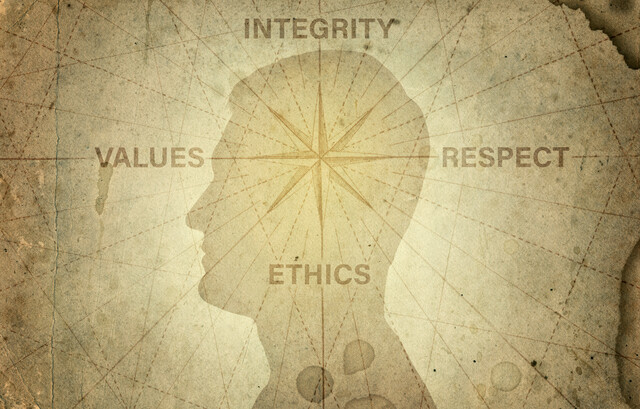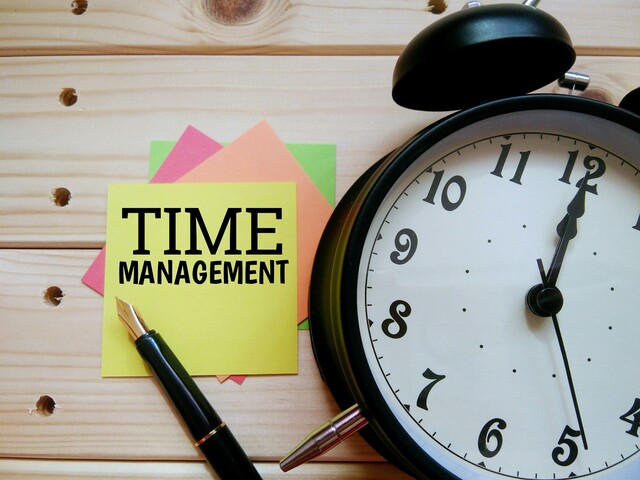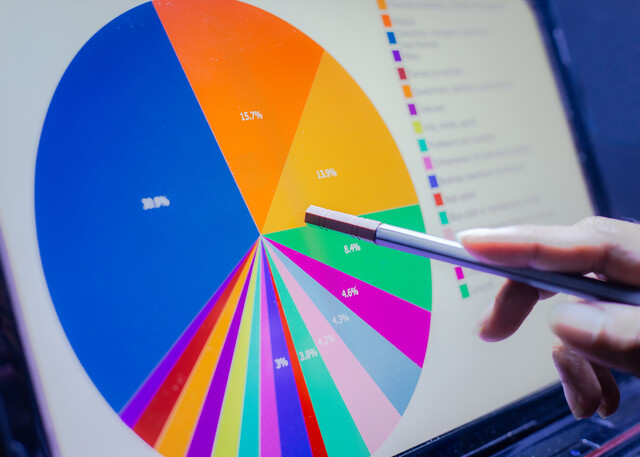The bulk of sensitivity training involves looking inward at yourself, examining your own feelings, beliefs, and values, and then realizing how they might affect the way you think about, or behave around, others in the workplace.
When you learn to look inward and, therefore, become more sensitive to others, you also take your professionalism up a notch. As we said earlier, if you work in a corporate environment, you learn a lot about things you should and shouldn't do to climb that ladder. This is part of it, too.
The One Thing We All Have in Common
There are not many people in this world who set out to be the proverbial odd man out. Nobody wants to be the one that doesn't fit in. Nobody wants to be the one who people stare at, fear, whisper about, or avoid.
That's not to say you have to like, agree with, or befriend everyone in your workplace to avoid making someone feel left out for any reason. You don't. What you do have to do, is be respectful of everyone in your workplace.
Disagreements and conflicts are going to happen, especially when two people or two groups of people share drastically different values, beliefs, or feelings, but when respect is shown from both sides, to both sides, conflicts can be resolved. When conflicts are appropriately resolved, both parties can come away with a greater understanding of the other � and even greater respect.
Why Respect Matters
Respect is critical to a productive workplace. Think about what would happen if you weren't respectful to your boss, if your boss wasn't respectful to you, or if you and your co-workers went out of their way to be disrespectful to each other. In truth, you already know how important respect is in your interactions at work, but it is so important it bears repeating.
It's important to treat everyone in your workplace with respect, even if you don't agree with them. This means you must treat everyone with respect, regardless of their age, job description, gender, sexual orientation, religion, race, etc. Just as you need to be respectful of everyone, everyone else should also be respectful of you.
The Benefits of Giving and Receiving Respect
There are still a lot of people today, maybe even some you know, who are resistant to any sensitivity or diversity training program, because they feel it requires them to handle certain people with special care. As we've said over and over in this course, that's not the truth.
Sensitivity (again) has to do more with looking inward at yourself and displaying appropriate behavior and nothing to do with giving anyone special treatment.
Every human being deserves respect, but respect is critical in the workplace. Respect fosters productivity. Respect in the workplace makes employees more successful at achieving goals and reaching the desired outcomes of the company.
As much as respect is needed in the workplace for the organization to thrive, it's also needed by each individual in the workplace. We all need to feel respected. We need to feel respected for what we bring to the table as an employee in the organization, and the recognition that we are all cogs in the wheel, so to speak.
Respect fosters goodwill and positive feelings. We need those feelings, as much as we seek to receive those feelings from others, in order to be able to do our jobs to the best of our ability and succeed.
Respectful and Disrespectful Communication Skills
It's assumed that nobody wants to be viewed as disrespectful by anyone, or to be disrespectful to anyone. However, in the workplace, you can easily come off as disrespectful by displaying behaviors that give off that exact impression.
Perhaps you don't particularly like a co-worker, and it has nothing to do with their gender, race, religion, age, or cultural background. Maybe you have a deadline to meet, and a certain co-worker keeps interrupting. Although you may face challenges in the workplace every day that challenge your patience and frustrate you, appearing disrespectful can create an entirely new conflict.
Is your style of communication viewed as disrespectful?
Disrespectful communication can occur through verbal and non-verbal (including written) communication. Someone who is viewed as disrespectful:
-
Expects everyone to communicate in the same way with the same emphasis and/or body language. This person gets visibly frustrated, annoyed, or irritated when someone doesn't communicate in the same way, such as with a non-native English speaker.
-
Chooses tone of voice, words, and body language that are demeaning or offensive, and continues to do so.
-
Doesn't respond when miscommunications are made obvious. When the disrespect is pointed out, this person shrugs it off, then continues to be disrespectful.
On the other hand, respectful communication opens its arms to differences and embraces different opinions and viewpoints.
Someone who is mindful and respectful when communicating with co-workers, employees, supervisors, and managers:
-
Understands the different aspects of behavior and realizes these impact respectful communication with others.
-
Understands the impact non-verbal communication can have on others.
-
Wants to learn how to communicate respectfully with a wide range of co-workers.
-
Understands that the relationship to the person and the situation can affect communication choices.
-
Uses effective, yet appropriate, communication with people who represent diverse groups, styles, job descriptions, etc.
-
Gives feedback to others about their communication skills.
Respectful communication is essential in the workplace, and it doesn't just apply to people or groups who are different than you. The workplace is a professional environment. Respectful communication is an unwritten part of your job description as a professional, if you want to advance your career and succeed.
The Different Meanings of Respect
People in your workplace will have different definitions for what's respectful based on their own personal beliefs, job status, and the life experiences they've had. There's no way you can know, or even learn, how to be respectful to everyone just by taking a course and participating in a program. Some of "rules of respectfulness" are simply learned by trial and error, and by old fashioned communication.
Let's put it this way: Certain behaviors are disrespectful to anyone or everyone. Chances are, you know what they are. We've even talked about them somewhat in the last lesson. You don't want to leave people out. You don't want to gossip. You don't want to discount someone's ideas or voice because they're different, or you don't agree with their feelings, beliefs, or values.
You should never treat anyone as less than you, or unwelcome, just as you should never make assumptions about someone based on stereotypes or gossip. These are basic behaviors that most of us know to avoid.
That said, there are "gray" areas, too. As we mentioned in the first paragraph of this section, people will hold different definitions of what's respectful and what's not, based on their own beliefs, feelings, and values. In the "gray" area, much of what will be considered respectful or disrespectful will be based on who's saying the words, or the context of the words that are spoken.
Facing Racial and Other Prejudices or Stereotypes
We typically associate the word "prejudice" with the hate or intolerance of people or groups who are of a different race, religion, sexual orientation, religion, etc. However, that is only the broader application of the word. Prejudice wears many faces, and it appears in many forms. No matter how hard we may try to avoid it, it even appears in those of us who strive to remain free of prejudice in our daily lives.
You may be reading this section right now and thinking that you're not at all prejudiced. However, as you go through this section, realize that being prejudiced isn't a bad thing. It's not a label that's only applied to "bad" people. Instead, it's human nature.
A Real World Definition of Prejudice
Webster's New World Dictionary defines prejudice as "a preconceived, usually unfavorable idea" or "an opinion held in disregard of facts that contradict it."
We, as humans, are wired to judge and form opinions that are either positive or negative. It is part of our ability to reason and to make choices, and it's necessary to successfully function in life. However, when we use the ability to judge and form opinions to label a person, or a group of people, based simply on our thoughts or preconceived notions, it becomes a prejudice. You may not even notice the prejudice in yourself. Many of us don't. Yet the prejudice can ultimately influence your behavior when you encounter the person or groups of people you've formed an opinion about, even if it is just subconsciously.
As we said at the beginning of this section, prejudice doesn't just mean a bias against people of different races, religions, ethnic groups, gender, etc. It goes far beyond that. Prejudice extends to:
-
Different social circles
-
Different lifestyles (for example: those on public assistance vs. those who aren't)
-
Different hair colors
-
Different body images (overweight vs. skinny)
-
Different financial pictures (poor vs. middle class vs. wealthy)
-
Different ways of speaking (southern U.S. accent vs. northern vs. western, etc.)
-
Different job title or status
-
And so on
Most prejudices that we form are subtle. We don't even notice them in ourselves. In fact, it's not uncommon for us not to notice them, because, often times, these prejudices are hard-wired into us as a result of our environment, family, education, community, beliefs, etc. However, those prejudices, even if you don't recognize them, can reveal themselves in your behavior.
You may:
-
Avoid befriending someone, even though evidence shows they're a good person that you might like
-
Become arrogant or condescending
-
Look over someone's needs, or their pain
-
Speak unkindly or disrespectfully to them, even though their behavior has in no way warranted it
This is part of starting to recognize the subtle prejudices that you harbor, then eliminating them by forming a new opinion based on facts and evidence instead of assumptions and preconceived ideas.
Defining Stereotypes
We apply stereotypes to groups of people. For example, a stereotype might be that "all obese people are lazy." You can form a stereotype from an encounter with a person you didn't like. Using the example, perhaps you knew an obese person who was extremely lazy, and you formed a stereotype from that, assuming that all obese people are lazy.
In this case, the stereotype you formed was based on evidence from one obese person. There is no evidence that all obese people are lazy. In fact, that's not true at all.
Stereotypes are different than prejudice in that they are usually based on an experience with one or a few people with a particular characteristic, then applied to everyone who shares that characteristic. Some people believe that since they have evidence to support their stereotype, the stereotype is accurate.
However, when you start to believe that a stereotype is accurate, it becomes a prejudice because there isn't evidence to support your preconceived idea that all people with that characteristic are the same way.
There is no such thing as a positive stereotype. Saying "All Asians are good at math," or "All African-Americans are good at sports," are both examples of stereotypes that seem like compliments, but they're not. You're making an assumption about an entire group of people, based on evidence you may have collected from just a few. In other words, you're putting a label on people that may hurt them or cause them pain. A stereotype is never a compliment � and it's never humorous, even when told in a joke.
The Components of a Stereotype
It may be hard for you to recognize a stereotype because, like prejudices, they are often a result of our upbringing, religion, gender, etc. There's no excuse for stereotyping any person or group of people, and it's not acceptable, even if you don't mean to do it. However, the only way to avoid stereotyping is to learn to realize when we're doing it.
There are typically three components to every stereotype we make.
1. Stereotypes assume that all people in a group are the same, such as, "Asians are good at math," "You know how women are," and so on.
2. They pass judgment on a person based on that person's perceived group, such as, "Muslims want to kill Americans," or "Democrats don't have any family values," or "People on public assistance are lazy."
3. Stereotypes are inflexible. Whenever we meet someone that should "fit in" to our stereotype, but doesn't, we assume they're the exception to the rule. We don't acknowledge and rethink the stereotype. Here's an example:
"You don't act like young people your age. You're a hard worker." In this example, the person is saying that young people don't work hard. That's a stereotype. The person is making an exception to the stereotype by acknowledging that one young person is a hard worker instead of rethinking the stereotype completely.
Recognizing Stereotypes
Stereotypes are packaged in all sorts of ways, such as in jokes, or even in trying to describe someone. Below, you'll find a list of the most common ways that stereotypes are presented in communication. Using this list, you'll be able to recognize when you're making a stereotype, as well as when someone in the workplace is applying stereotypes to you or other people around you.
-
Statements about a group of people that are applied to all people in the group. "Mexicans in this country don't want to learn to speak English."
-
Name calling or labels. "Blue hair" for an old person. "Trailer trash." Even "cougar."
-
Jokes. "Three Polish guys walk into a bar�"
-
Descriptions of people. "Typical grumpy old man." "Women are too emotional." "All men want is�"
-
Assumptions, such as assuming an employee with a lesser job status is not smart enough or capable of a certain task, or assuming a woman who works puts material possessions above raising her children.
-
Statistical Treatment. Using a statistic, such as "statistics show crime is mostly committed by�," to influence your treatment of a person included in that statistical group.
The only way to move past stereotypes is to treat people as individuals, and not as part of a group. Get to know people on a case by case basis, instead of giving in to a stereotype. It will take awareness on your part to accomplish, but it can be done.
Gender, Racial, and Ethnic Profiling
Profiling in the workplace is the act of labeling or regarding certain people as more unlikely to be able to successfully perform a job, or have certain positive character traits, because of appearance, race, gender, or religion. A person who is the subject of profiling may be excluded from an organization's activities, turned down for a promotion, turned down for a job, or left out of other opportunities. Profiling in the workplace happens as a result of stereotypes and prejudices that may be held by management, supervisors, employees, and perhaps even co-workers.
Below are some examples of profiling:
-
A man with dread locks is turned down for a senior management position, even though he holds the exact same qualifications -- and more experience -- than the other candidates. The reason is that management views him as having an unprofessional appearance.
-
A woman is turned down for a promotion. The reason is not her experience or education, but the fact that she has small children at home. Management feels she does not have the time required to put into the job.
-
A Muslim woman is required to have a higher security clearance than white, Christian women for the same job status after a recent terror attack.
These are all examples that we see talked about in the news on a fairly regular basis: race, gender, and ethnic profiling. However, profiling exists in several forms. An overweight person can be profiled. Someone with gray hair can be profiled. We all can be profiled at one time or another.
That's why it's so important we realize, that not only is profiling considered discrimination (which is illegal), it's also based on false stereotypes. It's not anyone's job in the workplace to pass judgment or form an opinion about anyone based on anything other than their qualifications and ability to get the job done.
Ethnic, Racial, and Gender Slurs
It should go without saying that you should never use a term that's considered a slur against anyone. You shouldn't do it in your everyday life, and you definitely shouldn't do it in the workplace. However, problems arise when people don't know what words are considered slurs, or when they use a slur as part of a joke without the intention of hurting anyone, but yet it still does.
Naturally, there are some words that we know are derogatory toward a certain ethnic group or gender, and we know not to use those. But there are some words we're not sure if we should use, because we're not sure if they're offensive or not. Not knowing doesn't make you ignorant, insensitive, or in the dark. As we've said a few times in this course, we all come from different backgrounds from which our experiences, as well as our vocabulary, are based.
That said, remember that we are all individuals. Even in the workplace where we can be known by job titles, departments, or as part of a team or organization, we are still individuals. Refrain from jokes that poke fun at certain groups of people, including those of a certain race, gender, nationality, etc. Don't identify or describe people by their race, gender, nationality, age, and such, either. Identify them as individuals.
For example, never say, "That black chick in sales." Instead, say, "That woman in the red blazer."
Don't say, "The Asian woman over there�" Instead, say, "The woman in the last cubicle on the right."
Always identify people as individuals. Never identify anyone by the group they belong to.































